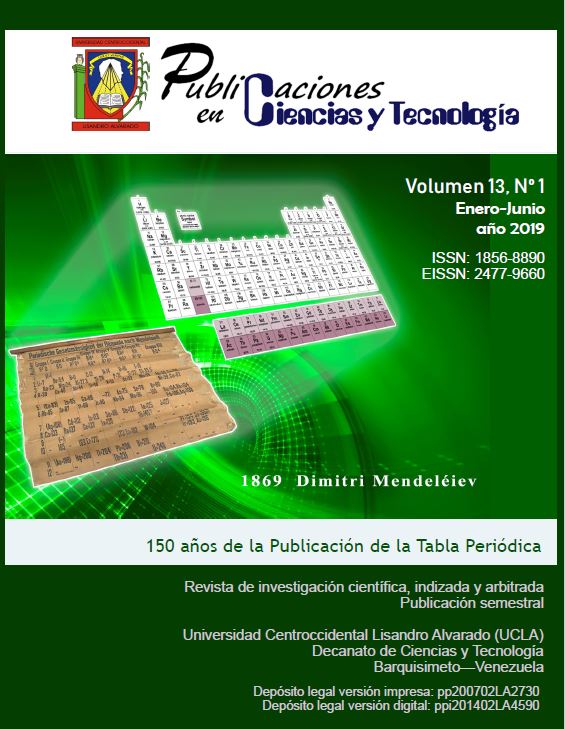Algorithm based on GRASP metaheuristics to solve the problem of the maximum diversity applied in the confirmation of work teams
DOI:
https://doi.org/10.13140/RG.2.2.20161.51046Keywords:
Metaheuristic, GRASP, maximun diversity problem, work teamsAbstract
This paper addresses the problem of forming work teams in the most diverse way possible, given that it is demonstrated that work teams that are diverse, functionally and demographically, are more efficient in solving problems. For this purpose, we adapted an optimization model to a maximum diversity problem, with the creation of an algorithm based on GRASP metaheuristics this was efficient. In the investigation, a solution algorithm is proposed for this case of combinatorial optimization problem, it is type of strongly np-hard, the algorithm was used specifically for the conformation of survey teams, they collect data for different surveys prepared by the National Institute of Statistics and Census of Ecuador.
Downloads
References
A. Newell. Human Problem Solving. Prentice-Hall, Inc., 1972.
E.P. Scott. The Difference: How the Power of Diversity Creates Better Groups, Firms, Schools, and Societies. Princeton University Press, 2007. New Edition.
J. Polzer; L. Milton; W.B. Swann. Capitalizing on diversity: Interpersonal congruence in small work groups. Administrative Science Quarterly, 47(2):296–324, 2002.
R. Martí; F. Sandoya. Grasp and path relinking for the equitable dispersion problem. Computers and Operations Research, 40(12):3091 – 3099, 2013.
A. Duarte Munoz. Metaheurísticas. Librería-Editorial Dykinson, 2007.
B. Jaime Andrés; H. Oswaldo. El concepto de equipo en la investigación sobre efectividad en equipos de trabajo. Estudios Gerenciales, 28:121–132, 2012.
G.L. Stewart. A meta-analytic review of relationships between team design features and team performance. Journal of Management, 32(1):29–55, 2006.
F. Sandoya; R.Aceves. Grasp and path relinking to solve the problem of selecting efficient work teams. In Javier Del Ser, editor, Recent Advances on Meta-Heuristics and Their Application to Real Scenarios, chapter 2. IntechOpen, Rijeka, 2013.
M.G. Resendel; C. Ribeiro. GRASP with Path-Relinking: Recent Advances and Applications, pages 29–63. Springer US, Boston, MA, 2005.
Computational aspects of the maximum diversity problem. Operations Research Letters, 19(4):175 – 181, 1996.
Grasp and path relinking for the max min diversity problem. Computers and Operations Research, 37(3):498 – 508, 2010.
Ch.Kuo; F. Glover; K. Dhir. Analyzing and modeling the maximum diversity problem by zero-one programming*. Decision Sciences, 24(6):1171–1185, 1993.
F. Sandoya. Un modelo para el problema de la diversidad máxima: Un Estudio para la selección de lo mejor y lo más diverso. PhD thesis, Universidad Autónoma de México, 2013.
F. Sandoya; A. Martínez-Gavara; R. Aceves; A.Duarte; R. Martí. Diversity and Equity Models. Springer International Publishing, Cham, 2016.
G. Kochenberger; F. Glover. Diversity data mining, Working Paper, 1999.
J.R. Hackman. The design of work teams. Prentice-Hall, Englewood Cliffs, NJ, 1987.
E. Sundstrom; K.E De Meuse; D.Futrell. Work teams applications and effectiveness. In American Psychologist, 2001.
C. Reyes; T. Cervantes; J. Gamboa; J. Quijano; T. Cuevas. Equipos de trabajo: Una herramienta efectiva para la administración de las empresas del sector manufacturero en ciudad juárez. European Scientific Journal, 8, 2012.
L.Hong; P. Scott. Groups of diverse problem solvers can outperform groups of high-ability problem solvers. 101(46):16385–16389, 2004.
C. Rodríguez Ortiz. Algoritmos heurísticos y metaheurísticos para el problema de localización de regeneradores. Proyecto fin de carrera, Universidad Rey Juan Carlos, 2010.
Published
How to Cite
Issue
Section
Copyright (c) 2019 Livino Manuel Armijos Toro, Fernando Francisco Sandoya Sánchez

This work is licensed under a Creative Commons Attribution-NonCommercial-ShareAlike 4.0 International License.
The opinions expressed by the authors do not necessarily reflect the position of the publisher of the publication or of UCLA. The total or partial reproduction of the texts published here is authorized, as long as the complete source and the electronic address of this journal are cited.
The authors fully retain the rights to their works, giving the journal the right to be the first publication where the article is presented. The authors have the right to use their articles for any purpose as long as it is done for non-profit. Authors are recommended to disseminate their articles in the final version, after publication in this journal, in the electronic media of the institutions to which they are affiliated or personal digital media.



